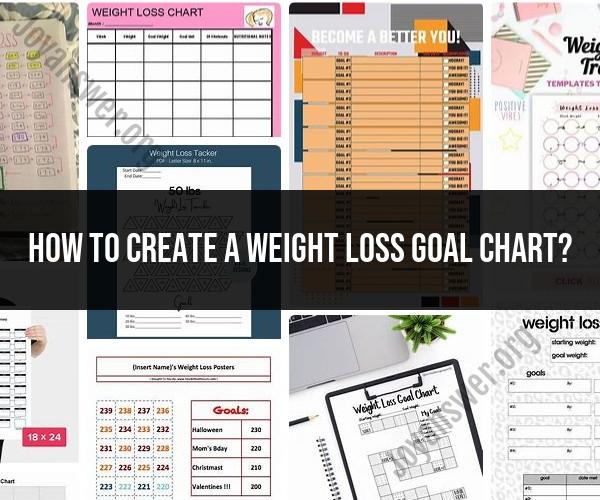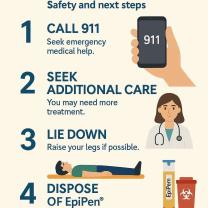How to create a weight loss goal chart?
Creating a weight loss goal chart is an excellent way to stay motivated, track your progress, and achieve your weight loss goals. Here are steps to help you create one:
1. Define Your Goals:
- Determine your specific weight loss goals. Be realistic and specific about how much weight you want to lose and in what timeframe.
2. Choose Chart Format:
- Decide whether you want a digital chart (e.g., using spreadsheet software) or a physical chart (e.g., on paper or a whiteboard). Digital options may be more convenient for tracking and analyzing data.
3. Create the Chart:
- If using a digital format, open a spreadsheet program (e.g., Excel, Google Sheets) and create a table with columns and rows. If using a physical format, draw or print a chart with columns and rows.
4. Column Headers:
- Label the columns with headers that will help you track your progress. Common headers include:
- Date: To record the date of each entry.
- Starting Weight: To record your initial weight.
- Goal Weight: To specify your target weight.
- Actual Weight: To record your weight at each weigh-in.
- Weight Lost: Calculate the weight lost (Starting Weight - Actual Weight).
- Notes: To add any additional information or notes about your progress.
5. Rows:
- Create rows for each entry on the chart, starting with the initial date and weight. You can fill in additional rows as you progress.
6. Set a Weigh-In Schedule:
- Decide on a regular schedule for weighing yourself. Typically, weekly weigh-ins at the same time and under the same conditions (e.g., in the morning, after waking up) are recommended for consistency.
7. Update Regularly:
- After each weigh-in, update the chart with the current date and your actual weight. Calculate and record the weight lost since the last entry.
8. Add Visual Motivation:
- Consider adding visual elements to the chart to keep you motivated. This could include a graph or chart plotting your weight loss progress over time. Seeing a visual representation of your progress can be highly motivating.
9. Review and Adjust:
- Regularly review your weight loss goal chart to assess your progress. If you're not meeting your goals, consider adjusting your diet or exercise routine as needed. Remember that weight loss can be gradual and may not always follow a linear path.
10. Stay Positive and Celebrate Milestones:
- Celebrate your achievements along the way, no matter how small. Reward yourself for reaching milestones and staying committed to your weight loss journey.
11. Seek Support:
- Share your weight loss goal chart with a trusted friend, family member, or a supportive online community. Having accountability and encouragement can make a big difference.
12. Be Patient:
- Weight loss takes time, and there will be ups and downs. Stay patient and focused on your long-term goals.
A weight loss goal chart can be a powerful tool to help you stay on track, measure your progress, and ultimately achieve your weight loss objectives. Remember that the most important aspect of your journey is your overall health and well-being, so prioritize sustainable and healthy practices in your weight loss efforts.
Charting Your Weight Loss Journey: How to Create a Goal Chart
Creating a weight loss goal chart is a great way to stay motivated and on track during your weight loss journey. It can help you to visualize your progress, set realistic goals, and track your successes.
To create a weight loss goal chart, follow these steps:
- Set a realistic goal. How much weight do you want to lose? How long do you want it to take you? Be realistic about your goals and don't try to lose too much weight too quickly.
- Break down your goal into smaller steps. Once you have set a goal, break it down into smaller, more manageable steps. For example, if you want to lose 20 pounds in 4 months, break it down into 5 pounds per month.
- Create a chart. There are many different ways to create a weight loss goal chart. You can use a simple piece of paper, a spreadsheet, or a weight loss tracking app.
- Label your chart. Label your chart with your goal weight, your start weight, and the date you started your journey. You may also want to label your chart with the date you expect to reach your goal.
- Track your progress. Weigh yourself on a regular basis and track your progress on your chart. This will help you to stay motivated and on track.
Visualizing Progress: The Importance of a Weight Loss Goal Chart
A weight loss goal chart can be a valuable tool for visualizing your progress. Seeing your progress on paper or on a screen can help you to stay motivated and focused on your goals.
When you see your progress on a chart, you can see how far you have come and how much closer you are to your goal. This can be a great motivator to keep going, even when things are tough.
A weight loss goal chart can also help you to identify areas where you need to improve. For example, if you are not seeing any progress on your chart, it may be a sign that you need to adjust your diet or exercise routine.
Setting and Achieving Goals: Using Charts for Weight Loss Success
Using a weight loss goal chart can help you to set and achieve your goals. By breaking down your goal into smaller steps and tracking your progress, you can make sure that you are on track to reach your goal.
A weight loss goal chart can also help you to stay motivated and focused on your goals. When you see your progress on a chart, you can see how far you have come and how much closer you are to your goal. This can be a great motivator to keep going, even when things are tough.
Here are some additional tips for using a weight loss goal chart:
- Be realistic about your goals. Don't try to lose too much weight too quickly.
- Break down your goal into smaller, more manageable steps.
- Create a chart that is easy to understand and use.
- Track your progress on a regular basis.
- Celebrate your successes!
By following these tips, you can use a weight loss goal chart to achieve your weight loss goals and improve your overall health.












